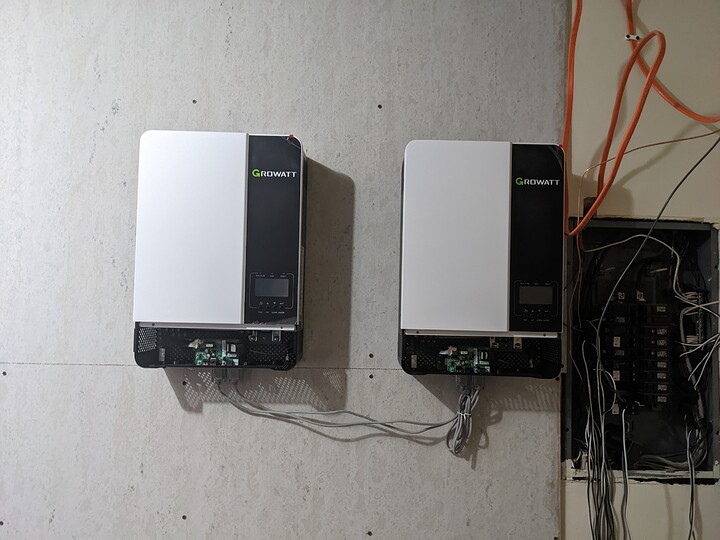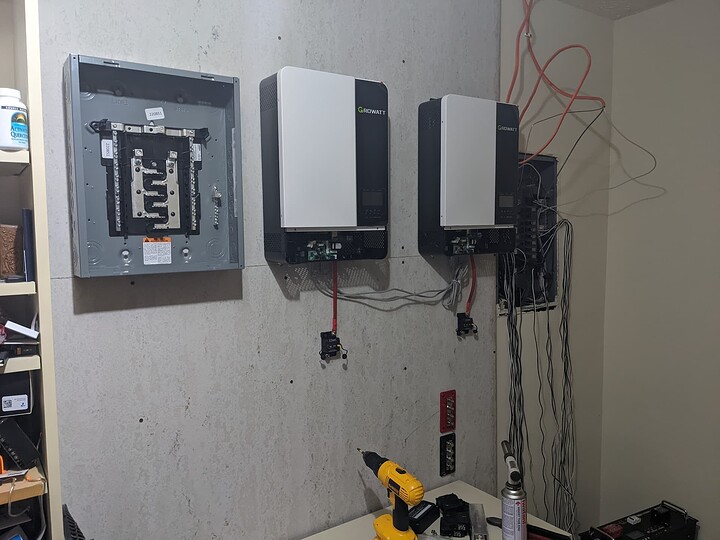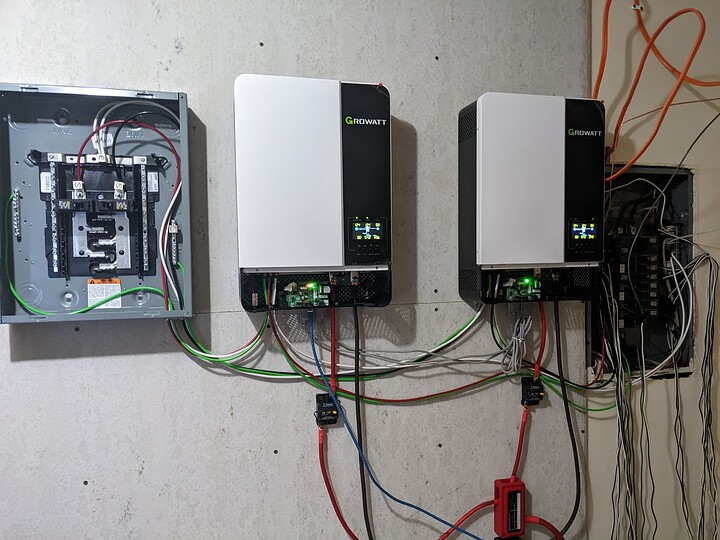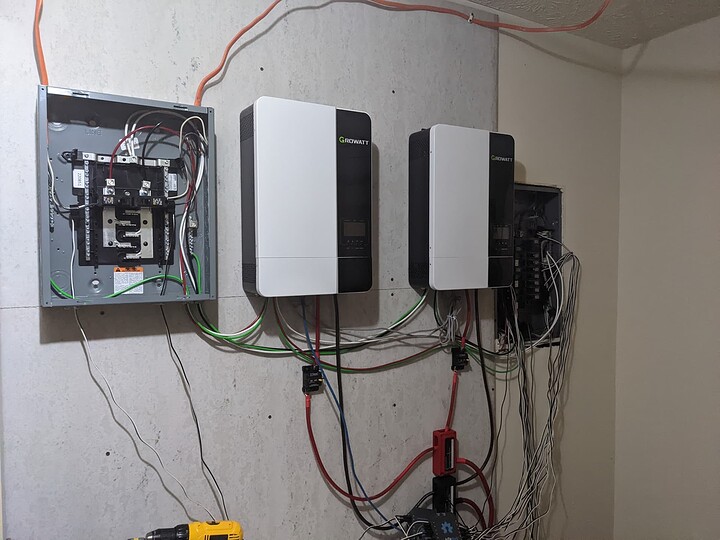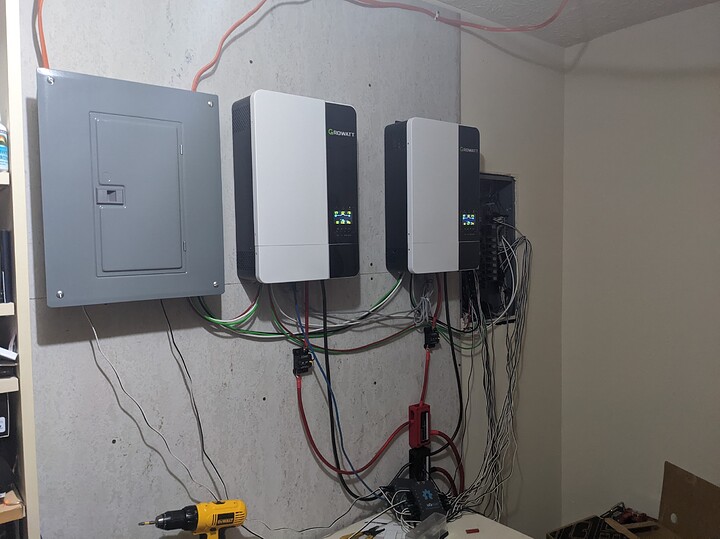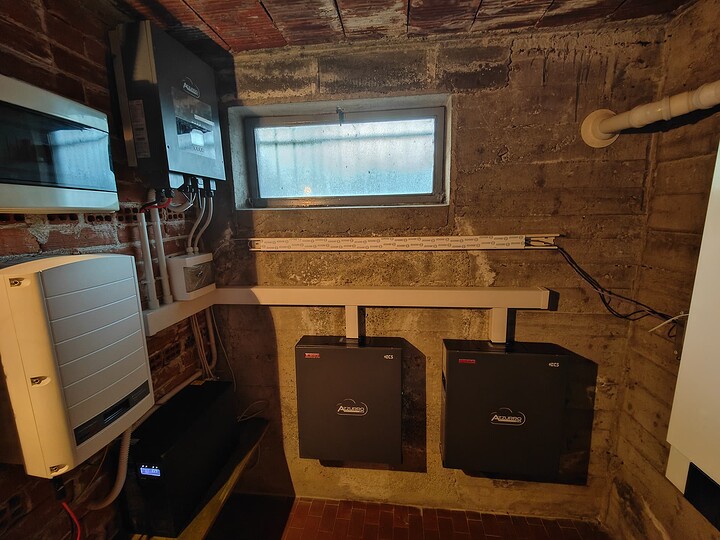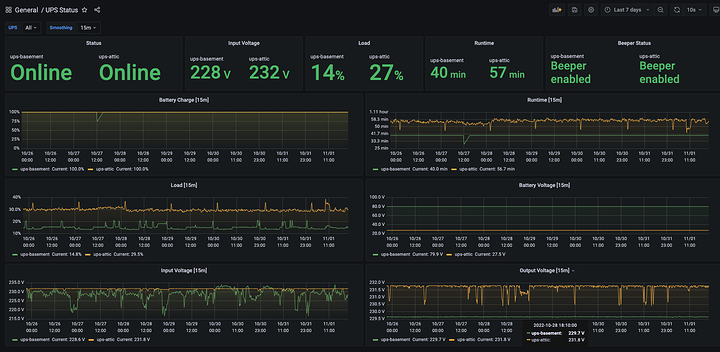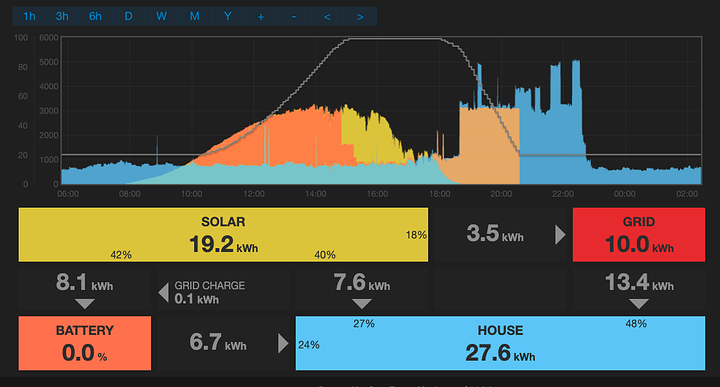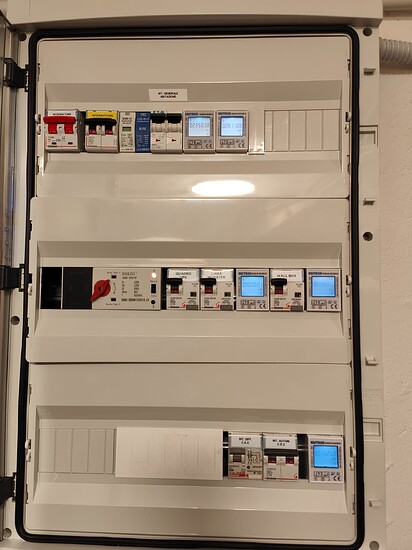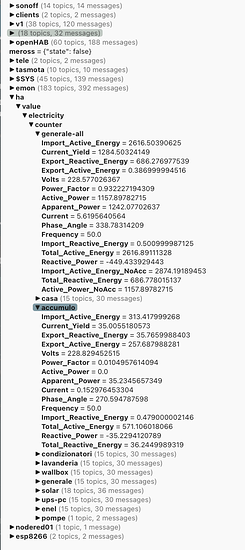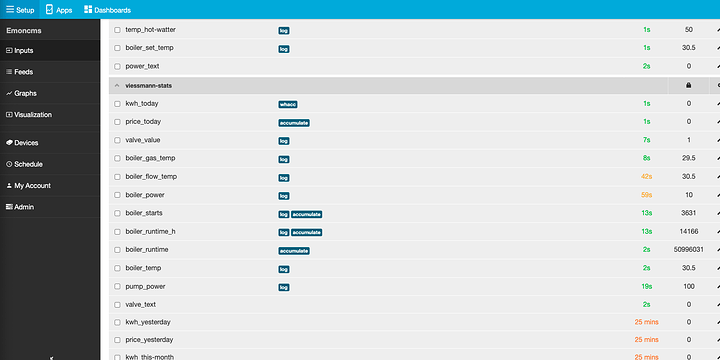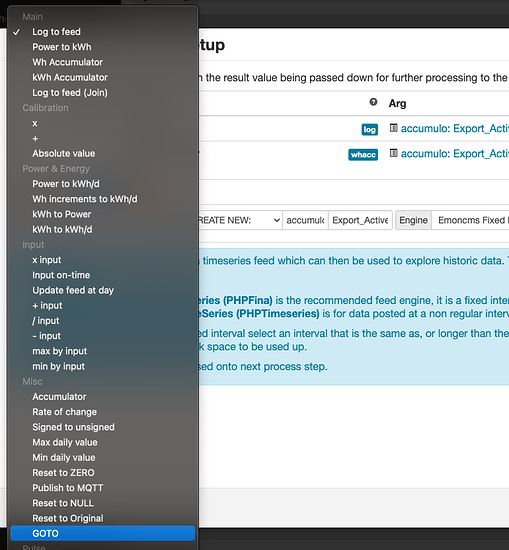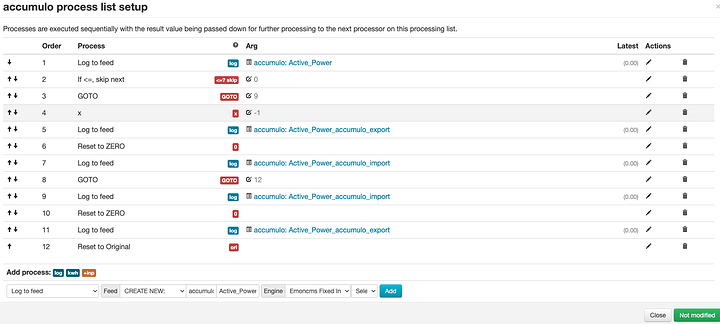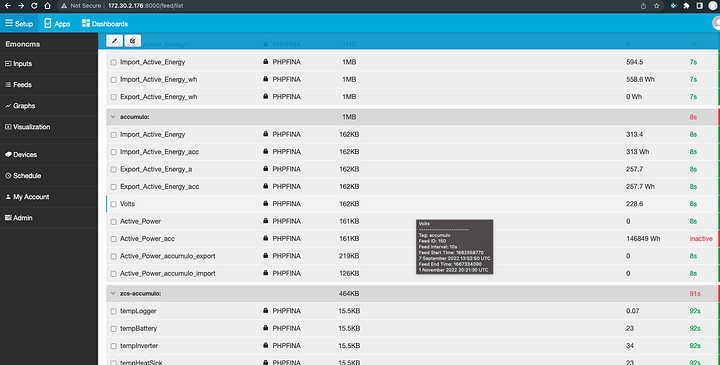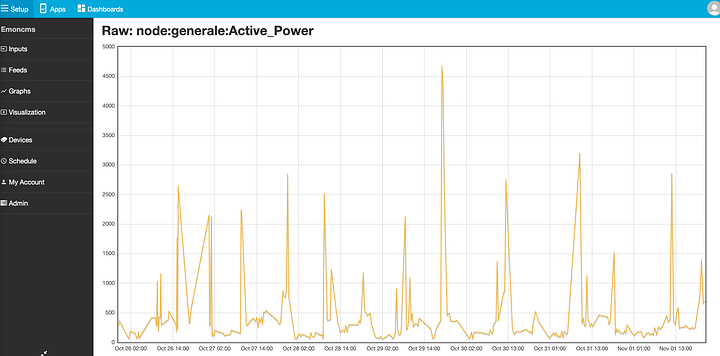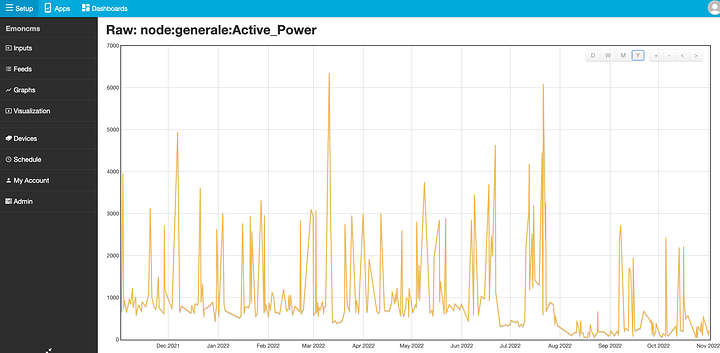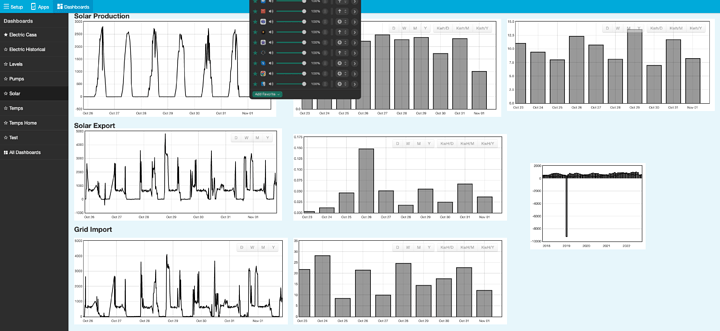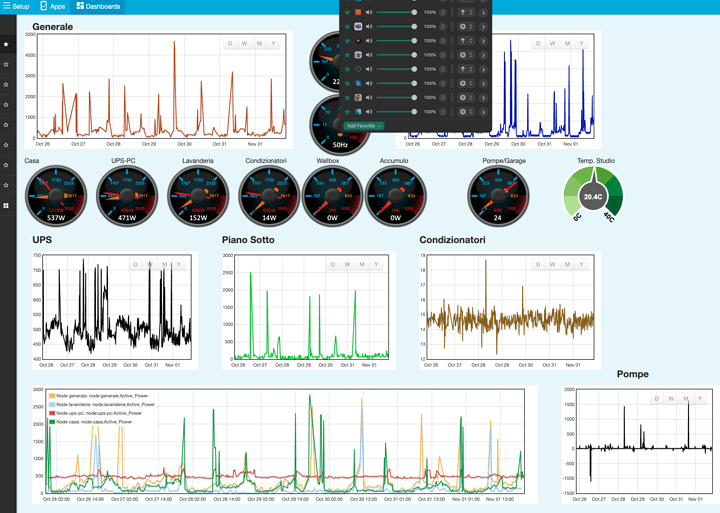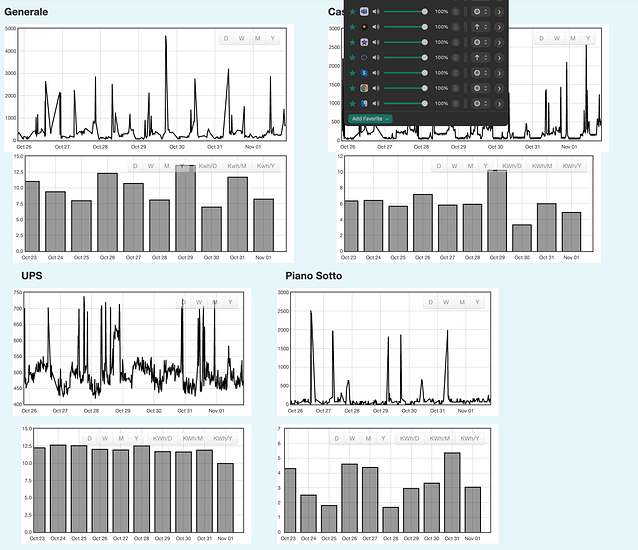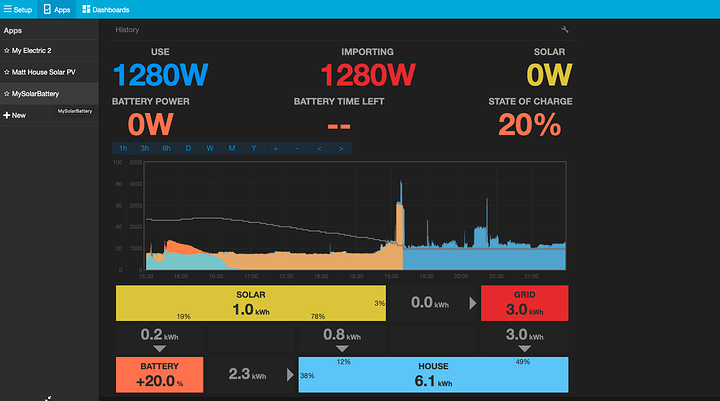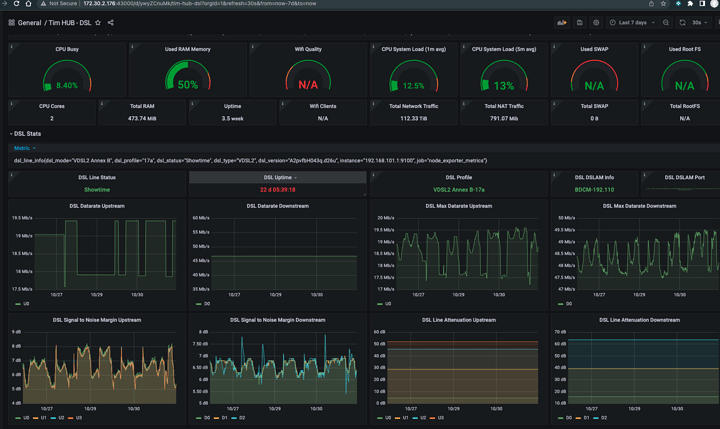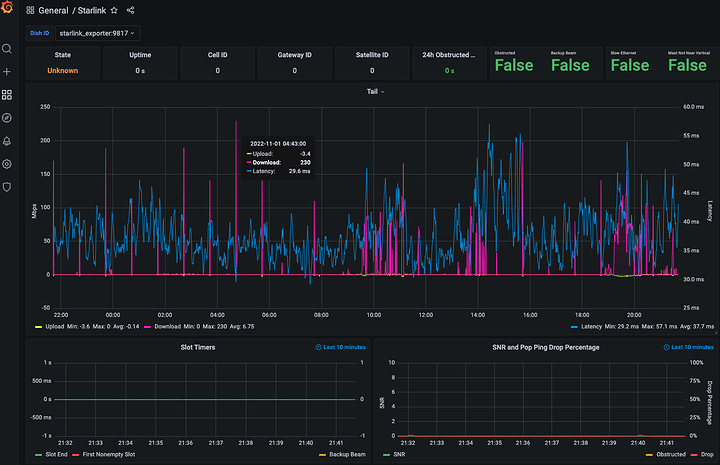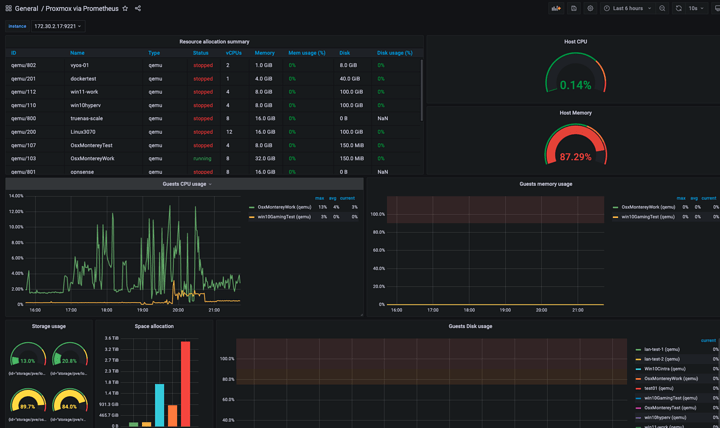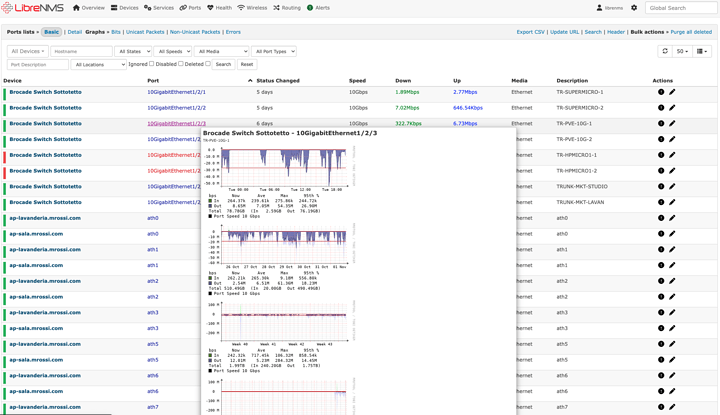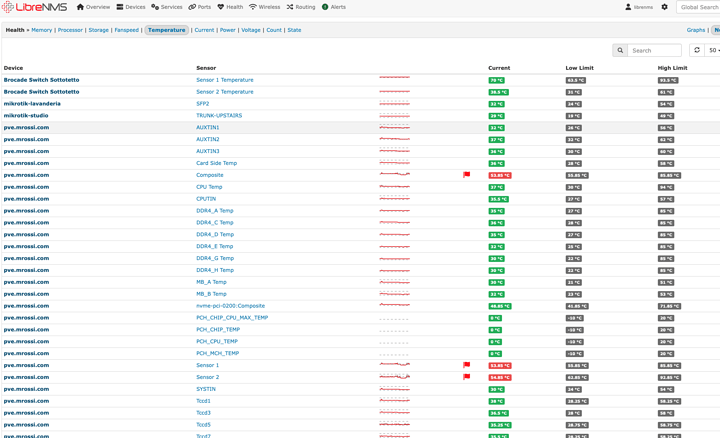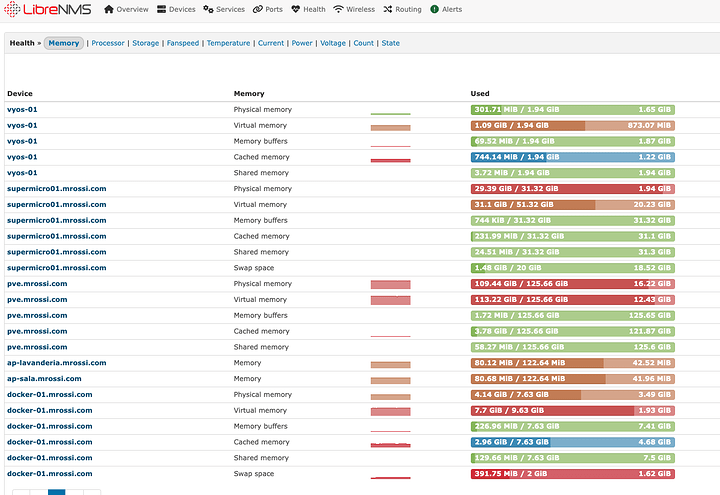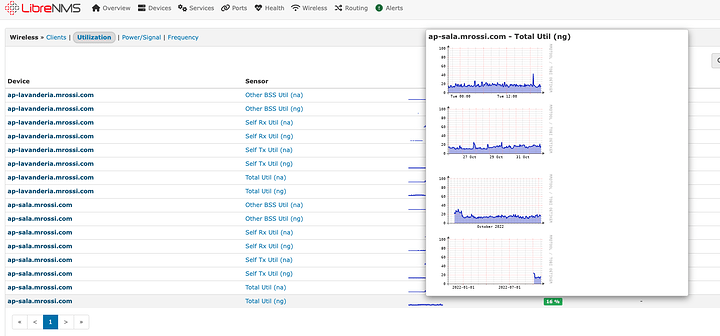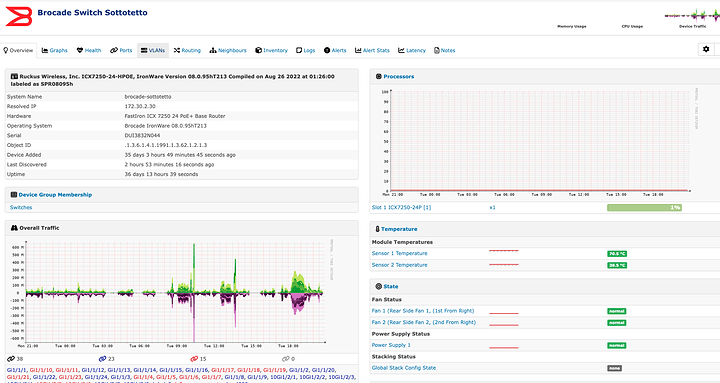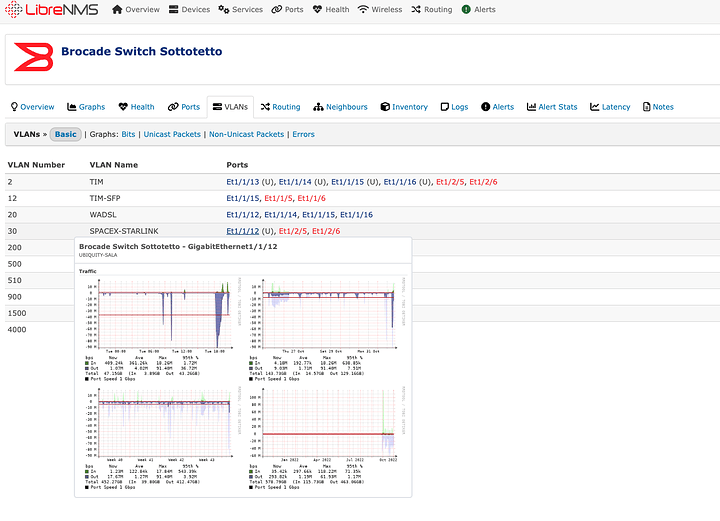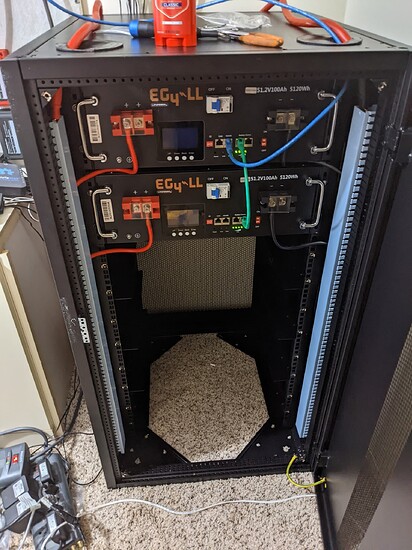So, I use to have two APC SMT3000RM2U that I had modified with an external 100AH 48VDC SLA battery but after years of service the charge controllers in them died. So I started looking around for a set of replacements and was looking at the APC SRT3000RMXLA-NC on eBay, the price was a bit high for my taste, but not out of the question, the bigger problem being that it used a 96VDC battery pack and the extended runtime battery packs were expensive and you did not get a lot of run time for the cost.
So I started looking around for alternatives, so down the internet rabbit hole I went, I looked at things like the AIMS Power PICOGLF120W48V240VS, but that was kinda too heavy for me to mount to the wall by myself. I looked at some of the Victron Energy stuff, neat ecosystem, but a bit rich for what I was looking for. Then I found two candidates for what I wanted, the MPP Solar PIP-LV-MK SERIES – ZERO TRANSFER TIME inverters and the Growatt 3kW Stackable Off-Grid Inverter | SPF 3000TL LVM-ES.
Now I had narrowed down my inverter options I started looking at batteries, everything from Battle Born Batteries, SOK, Big Battery, and EG4. It seems like there is a pretty decent community around the different battery companies, but I ultimately went with the EG4-LL Lithium Battery | 48V 100AH battery for its BMS and built-in precharge resistor. The warranty was nice also, the shipping on it sucked though. (read expensive)
So going with the EG4-LL kinda pushed me to the Growatt SPF 3000TL LVM-ES inverter for its ability to talk natively to the BMS on the battery vs the MPP Solar inverter that was a bit harder to find an online community around, but it was a good backup plan to have to incase the transfer time on the Growatt was not fast enough for my equipment. For some context, the Growatt’s transfer time is ~10 (average)-20 (max)ms compared to the 4(average)-8(max)ms that an APC UPS is. I also did a bit of research and found that most of my gear has a hold-up time of ~17ms, so I thought I would be pretty safe, but there is no telling how something will perform in the real world vs on paper.
So I ordered everything through Signature Solar and then played the waiting game, the inverters came in 2-3 days via FedEx and the battery came about a month later (it was a pre-order, they sell out fast). While I was waiting on the battery I started a gsheet of all the different supplies and what not I would need. ( Whole Home UPS - Google Sheets ) I already had some knukonceptz Power Cable from my car audio days, so that was a nice little savings.
Once I get everything in, I started the project on the first free weekend I had, I am hella outta shape from covid times and never leaving the house so it took me longer than I want to admit to get it all done, but it is done and working as intended and now I have ~2.65 hours of battery backup for the rack and room to grow. The inverters are setup in a split-phase arrangement so I can power 120VAC and 240VAC stuff, might put the HVAC on this at a later date or I was also looking at a 48VDC mini-split I could power directly off the battery pack, you can put like 16? of these batteries in parallel with the BMS comms and they will work as one cohesive unit.
I am open to any and all questions, here are some ugly pictures.
